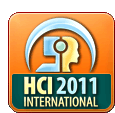T20: How to Select the Most Appropriate Methods for User Centered Design
Half Day Tutotial
Nigel Bevan (short bio)
Professional Usability Services, United Kingdom
Objective
Participants will learn how, with the support of a free online tool that incorporates principles from ISO standards, the most beneficial and cost effective methods to support User Centered Design (UCD) can be selected for individual projects, by identifying the project constraints, and assessing the benefits and the potential risk to the project of not carrying out the essential human centered activities.
Content and Benefits
The course will explain the process implemented by the Usability Planner tool:
- Identify and prioritize the human centered design activities that are necessary for a particular project, based on an assessment of either the estimated cost benefits, or the importance of reducing project risk.
- Select from a checklist the objectives and constraints associated with the project, including the importance of usability, the budget, timescales, skills available and the user and task characteristics
- The tool will then recommend the most appropriate methods for each activity, in a prioritized list of activities. Further information is provided about each method, including links to the Usability Body of Knowledge.
Previous approaches to the selection of UCD methods have started with the method, rather than the purpose for which the method is used. Usability Planner uses the detailed set of human-centered activities in ISO PAS 18152 as a basis for prioritizing activities and identifying the types of methods to use. Prioritization is based on identifying which methods contribute most to improving usability and providing business benefit, or reducing project risk. The tool uses criteria based on ISO TR 16982 to identify which method is most appropriate. Creating a tool has made it practical to apply the comprehensive but complex principles in these standards.
After presenting and discussing how the tool models expert judgment, volunteers from the audience with a range of requirements will be invited to walk through use of the tool. To help the audience gain a better understanding of the potential usefulness of the tool, each volunteer will be asked to think aloud, and members of the audience will be invited to ask questions during each demonstration.
Discussion will be invited on the extent to which the recommendations of the tool match expert judgment. The tutorial will show how the weightings and selection criteria can be adjusted, and feedback for further improvements will be invited.
Target audience
People new to HCI needing guidance on selecting appropriate methods, educators who need to explain the choice of methods to students, people who want to extend the range of methods that they use, and people needing a basis for prioritizing and justifying which methods to use.
Relevant links
Bio Sketch of Presenter:


